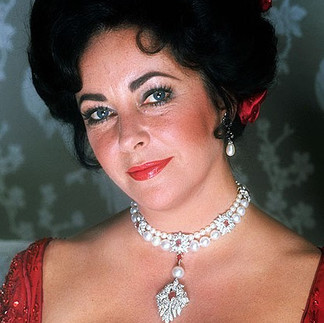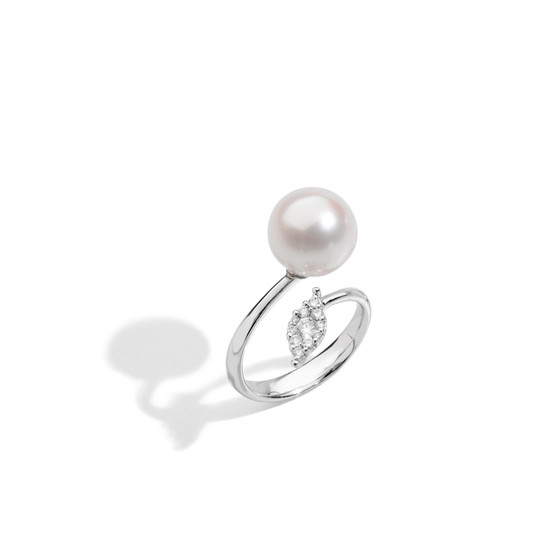The birthstone of June is the pearl - although it is not literally a "stone", it falls in this category by its very nature. To learn more about this true wonder, the only gemstone created by a living creature, read our post below.
”The pearl is the queen of gems and the gem of queens” Grace Kelly
How is it possible that the Parisian jeweler Pierre Cartier was able to buy the property in which he opened his shop on Fifth Avenue, New York, for a single string of pearls?
The pearl was one of the most precious gems of all ages. The value of some rare natural pearls has also surpassed that of diamonds. Pearl is actually a natural material and because of its amazing shapes and gorgeous colors, it has been one of the most popular and noble ingredients of jewelry for thousands of years.
In astrology, pearl is the “gem” of gemini. It symbolizes nobility as well as warmth and mystical elegance. Its wearer is mysterious and uncovered, wise and noble, like a pearl hidden in a shell. Pearls are also called the “caviar” of gemstones, as the pearl has been a symbol of luxury, elegance, sophistication and good taste all over the world throughout history - and it is no different today.
Although never completely round and perfectly spherical, it is still considered one of the most perfect jewels in human history.
Are natural pearls and cultured pearls equally valuable?
Natural pearls are obtained from sea or occasionally from freshwater mussels, so pearls that are naturally caught. Cultured pearls, on the other hand, come from shells that are artificially cultured: professionals insert round beads (nucleus) into the molluscs to serve as a seed, which the animal coats in nacre, a hard iridescent material also known as mother of pearls (a similar process that happens in the natural pearl around sand seeds or parasites).
In fact, natural pearls are literally not hunted anymore, with 99% of the world’s pearl trade done with cultured pearls. This is because pearl diving was an extremely time-consuming and overwhelming task - moreover, only a small proportion of the shellfish caught had a pearl inside, so the ecological footprint of pearl hunting was disproportionate. Whether a piece of pearl is natural or cultured can be determined by X-ray and deeper laboratory tests that show the aforementioned small nucleus in the center of the pearl around which the mother of pearl was built.
Pearl culturing started on an industrial scale from the first half of the twentieth century with a process widely popularized by Kokichi Mikimoto. Interestingly, China experimented the creation of pearls as early as a millennium ago by forcing tiny Buddha statuettes into shells that had covered the invaders with mother of pearl in defense. Yet, the first high-quality cultured pearls were not introduced to the general public until the 1920s.
Although pearl culturing has greatly facilitated the market availability of pearls, it is by no means a simple process. It can take from 2 to more than 10 years for the pearls to be harvested, during which time the pearl farm is exposed to a number of hazards. Even after the cultivation time, not every shell will contain a pearl, and the gemstones extracted can greatly differ in size, shape and quality, making their values highly variable. For this reason, cultured pearls can also be extremely valuable.
Images: Utopia Jewels
Types of pearls and their value
There are different types of pearls in different values. The most valuable are the largest and most beautiful South Sea pearls and Tahitian pearls.
South Sea pearls are cultivated near the Australian coast. They are over 10mm in size and can even reach 20mm. It may take more than 10 years for a pearl to fully develop. South Sea pearls exist in white / greyish white, silver and golden colors.
Tahiti pearls, which can be found in many shades of gray - bluish gray, greenish gray or purple gray - are also large in size (8.5-18 mm) and have a similarly high value. This variety is also called the "Queen of Pearls" because it has a beautiful color and shine even in its natural form, so it would not require any treatments and enhancements.
Akoya pearls are also cultured in saltwater, but are smaller in size (2-10 mm in diameter) and typically enhanced by some post-treatment. They come in a variety of colors, from white to cream and pink to gold.
Freshwater pearls are less valuable, available in a wide variety of shapes and sizes, but are very popular in the jewelry industry due to their low cost and accessibility.
Similarly to diamonds, the value of a pearl is also determined by several factors. In the case of pearls, these are:
size: those larger than 10 mm are the most valuable and the value increases exponentially with the size
nacre: the thicker and finer the pearl nacre, the more valuable the pearl
luster: the reflection of light is one of the most important quality factors, which is also closely related to the quality of the nacre
shape: spherical pearls are the rarest, and the more regular the spherical shape, the more valuable the bead; however, beautiful and precious jewelry is also made of pear-shaped, or more amorphous, so-called baroque pearls
surface: how smooth their surface is, whether they have dots or other surface defects, also impacts their beauty and value
color: although it can affect the price of a pearl, color is a subjective factor, there is no definite guidance in this regard
Pairing the beads also affects the value of a piece of jewelry. Assembling a nobler string of pearls from beads of similar size and quality is an extremely difficult task, as is assembling a bead with color gradients. For a rare and high quality pearl, even pairing for an earring can be a challenge. The value of a piece of pearl jewelry should therefore be determined by taking all these factors into account.

Image: Utopia Jewels
How to care for your pearl jewelry
Pearl jewelry is amazing but extremely delicate. The components of a pearl are organic and therefore subject to changes; it can easily lose its shine and dry out. If you want your pearl jewelry to keep its original beauty, you need to pay attention to the following:
Pearls are sensitive to acids, cosmetics and even sweat, so avoid contact with soap, perfume, cream, makeup, and don’t wear your pearl jewelry when sunbathing.
Because their surface is soft and sensitive, they can be easily scratched. Therefore wear and store them in such a way that they do not come into contact with metal. It is recommended to store pearl jewelry separately from other jewelry, mostly piece by piece, in silk bags or in a bag made of soft material. Do not use leather, as the tannic acid in it will damage the surface of the pearl and fade it.
Do not expose the beads to excessive sunlight and do not keep them in the immediate vicinity of a radiator. The sun’s rays and the hot radiator can dry out the outer pearl layers.
Tip: After wearing - and before putting them in their textile bag - wipe your pearls with a soft, dry cloth to remove any dirt and cosmetics they might have collected.
Interesting facts and fictions about pearls
According to Greco-Roman mythology, the goddess of love, Aphrodite (or Venus), was born of a seashell - this is also a symbol of the birth of the pearl.
Cleopatra allegedly dissolved an invaluable pearl in wine (or wine vinegar according to some narratives), which she then drank to impress her lover, Marcus Antonius. (A pearl dissolves in up to five days, but let’s not try that in practice…).
The most famous pearl in the world is a natural pearl called La Peregrina (“Pilgrim”), which was found in 1579 when it was still considered the largest in the world. It was kept as a Spanish crown jewel for two centuries, then toured France and England until Richard Burton bought it for his wife, jewelry enthusiast Elizabeth Taylor, for $ 37,000 at an auction in 1969. After the actress died, the pearl jewel went to her new owner for $ 11 million.
The world's largest known pearl weighs 34 kg and is estimated to be worth $ 100 million. It is owned by a Philippine fisherman who hunted it and apparently has no plans to sell it...
The pearl is timeless and it is back in fashion, especially when combined with diamonds and colored gemstones. It is not “our grandmothers’ jewelry” anymore, on the contrary! The pearl is good for everyone: with a little look around and selection, every lady can find the perfect pearl jewelry for her. You can wear it for any occasion, except for one: it is not recommended for the bride at a wedding, because superstition says the pearl symbolizes the tears that the future wife will shed at the marriage. If you are a bride, you should wear diamonds, as the diamond is a symbol of eternal love and stability.
Images: Utopia Jewels, Cervera Jewels (from PAVÉ Jewellery's fine selection)



















































Comments